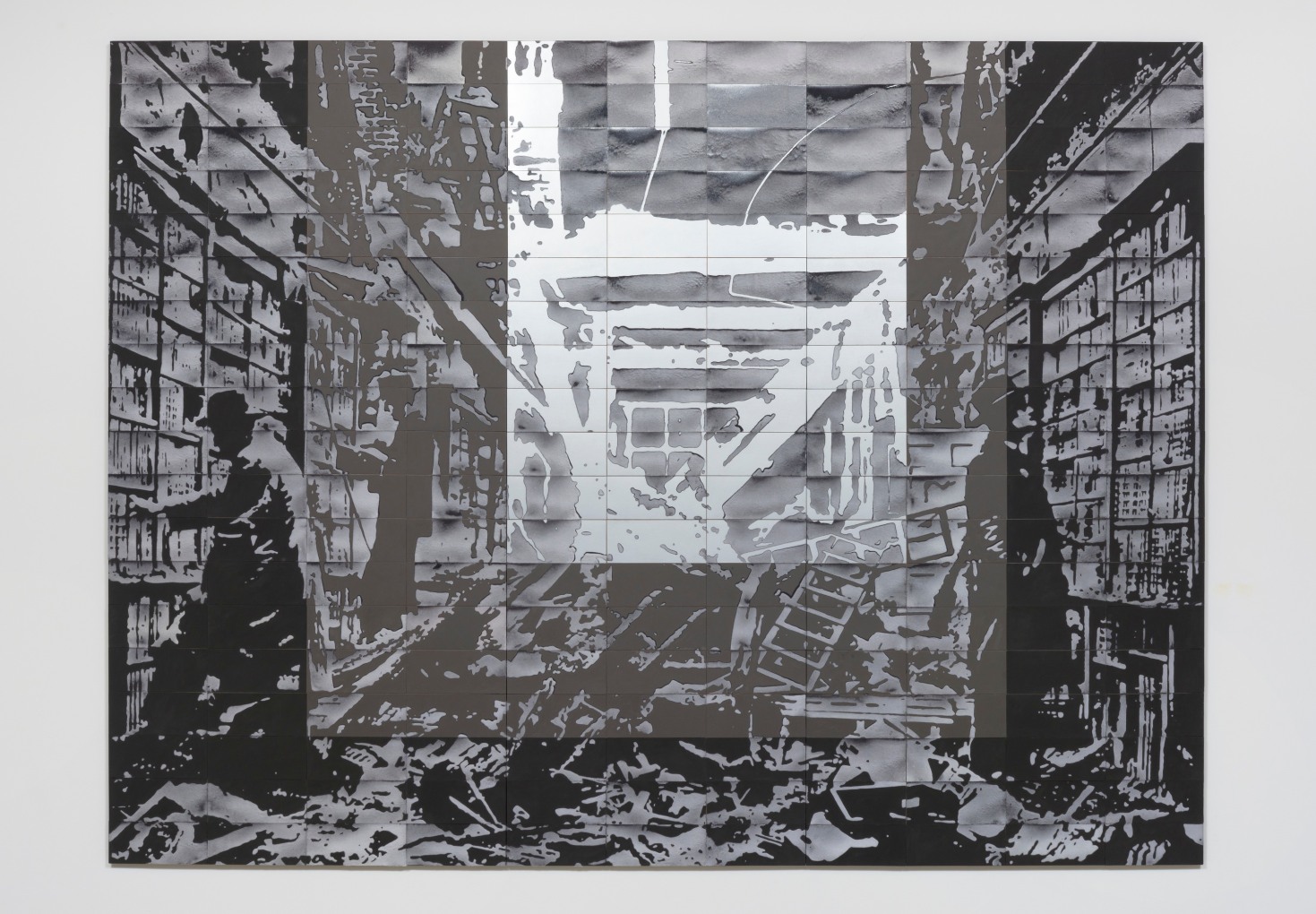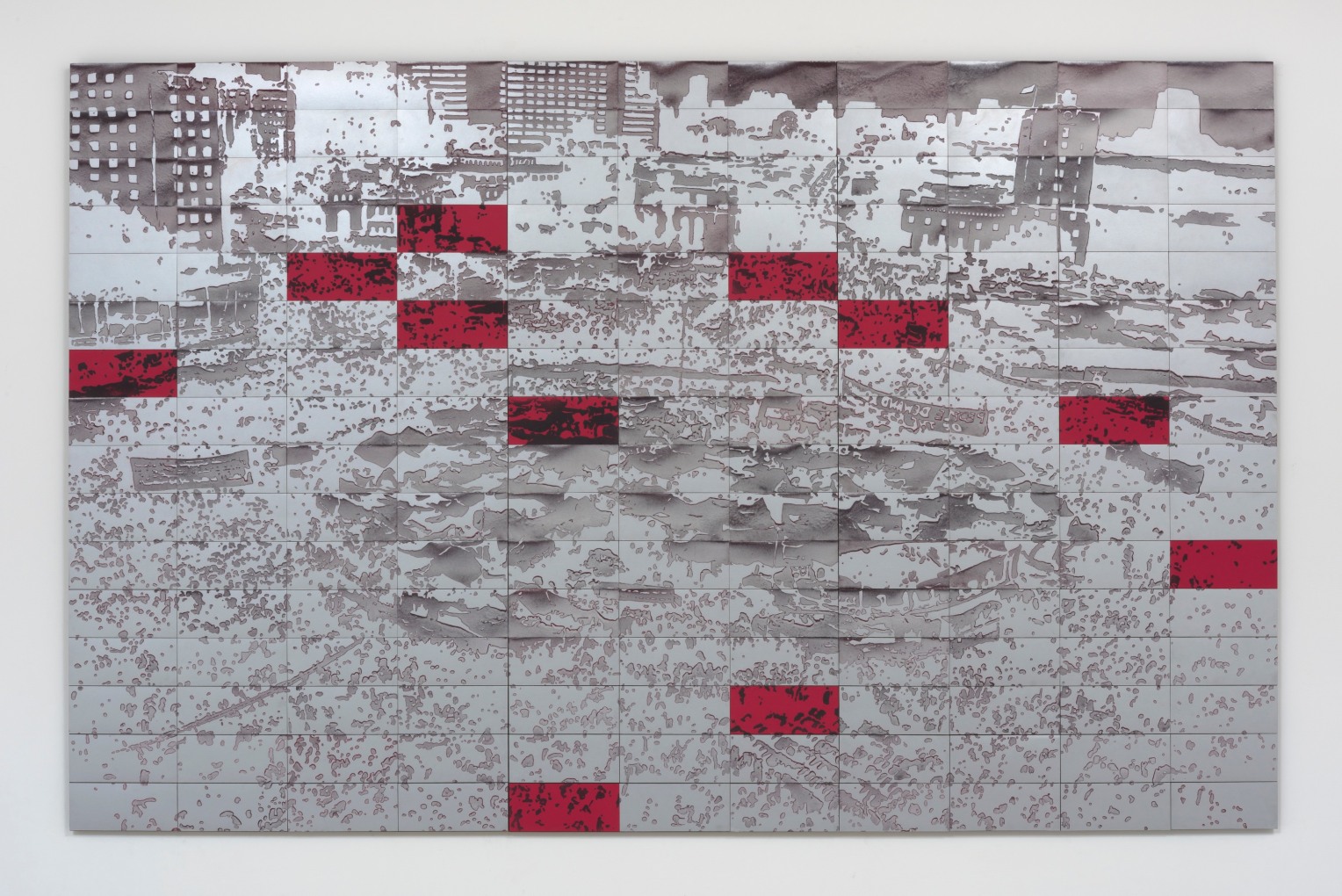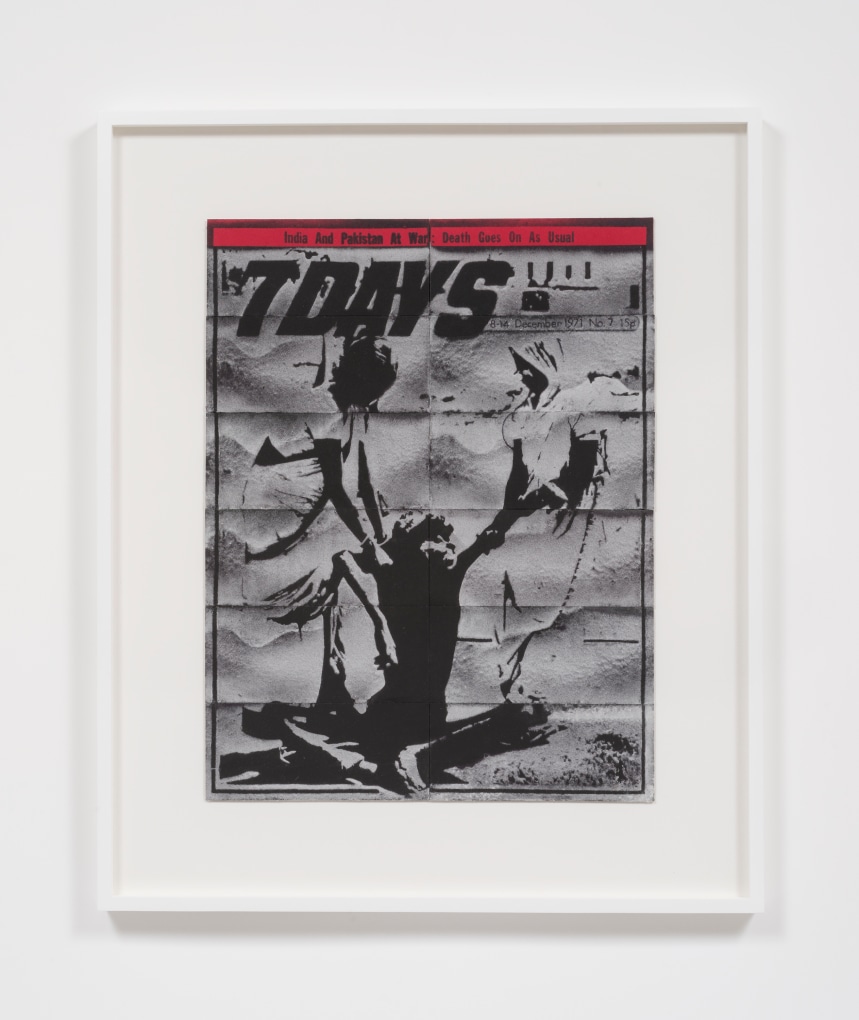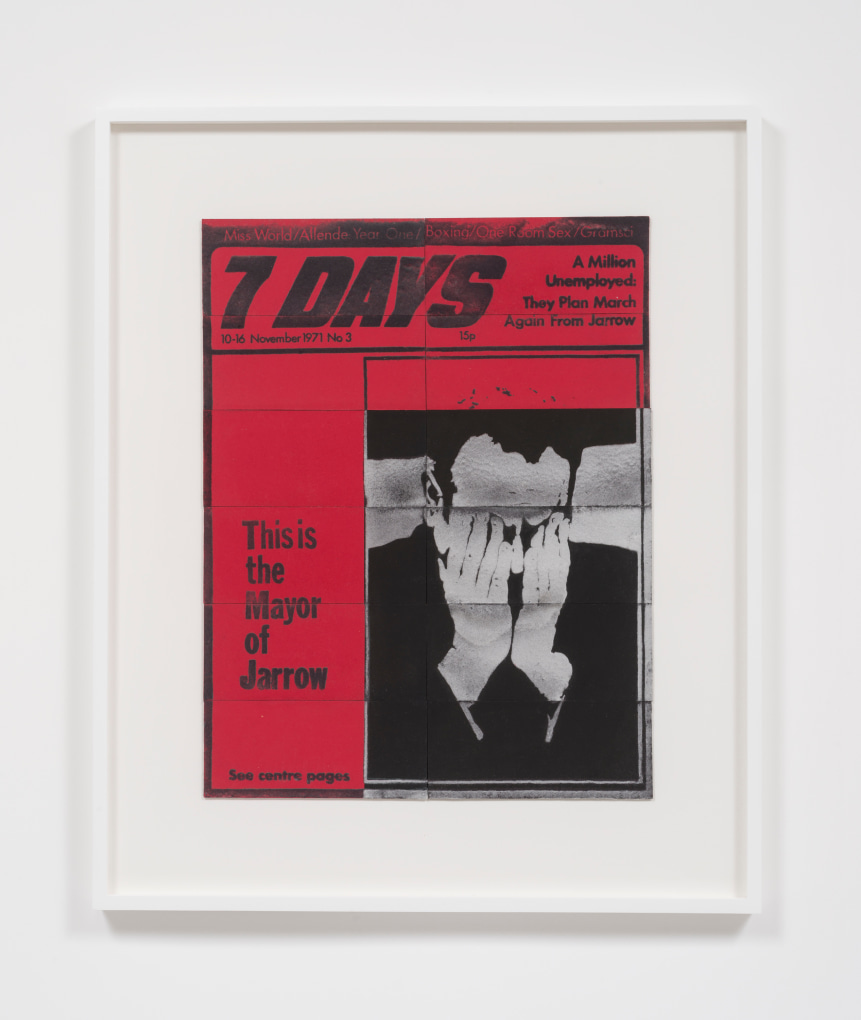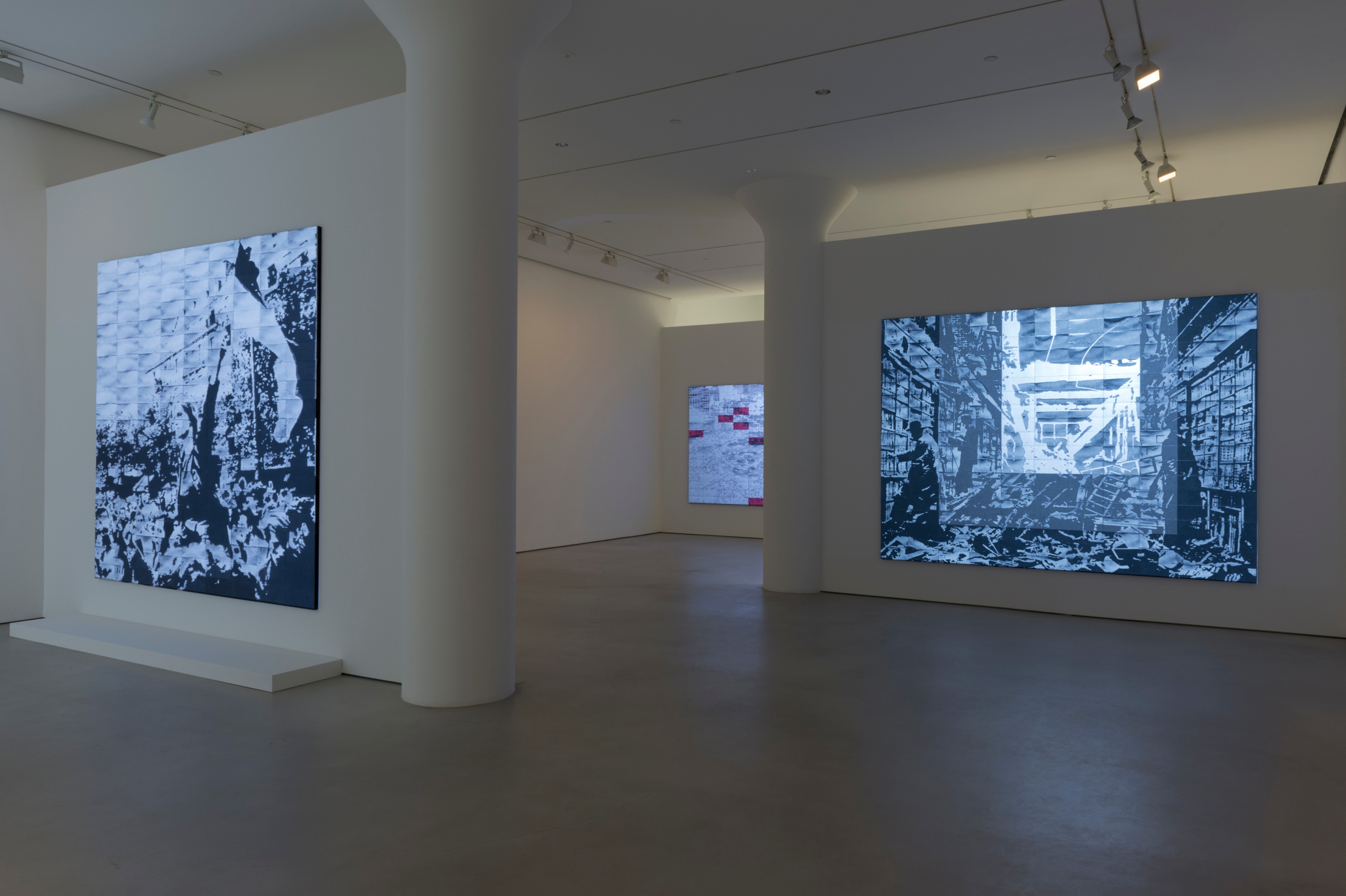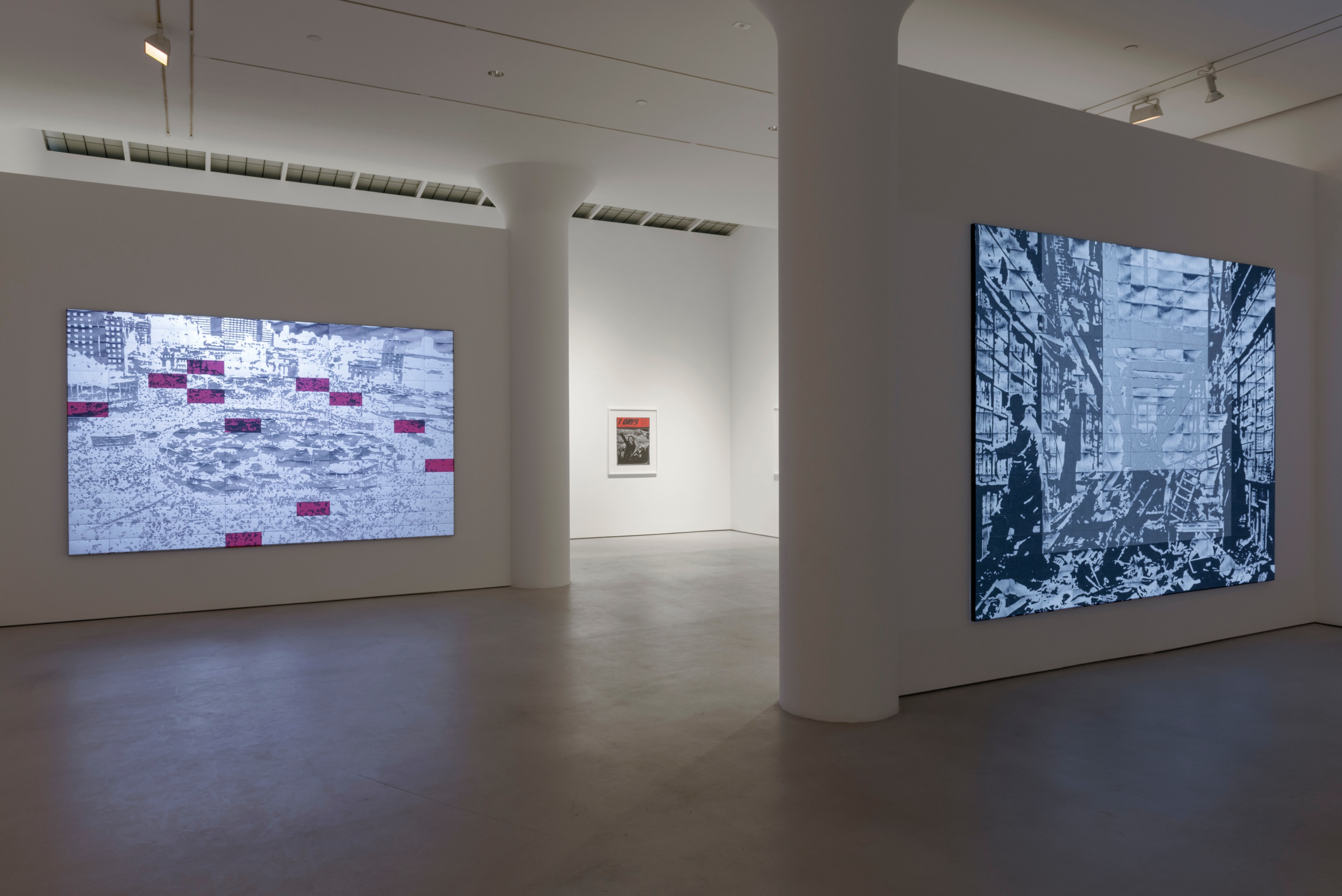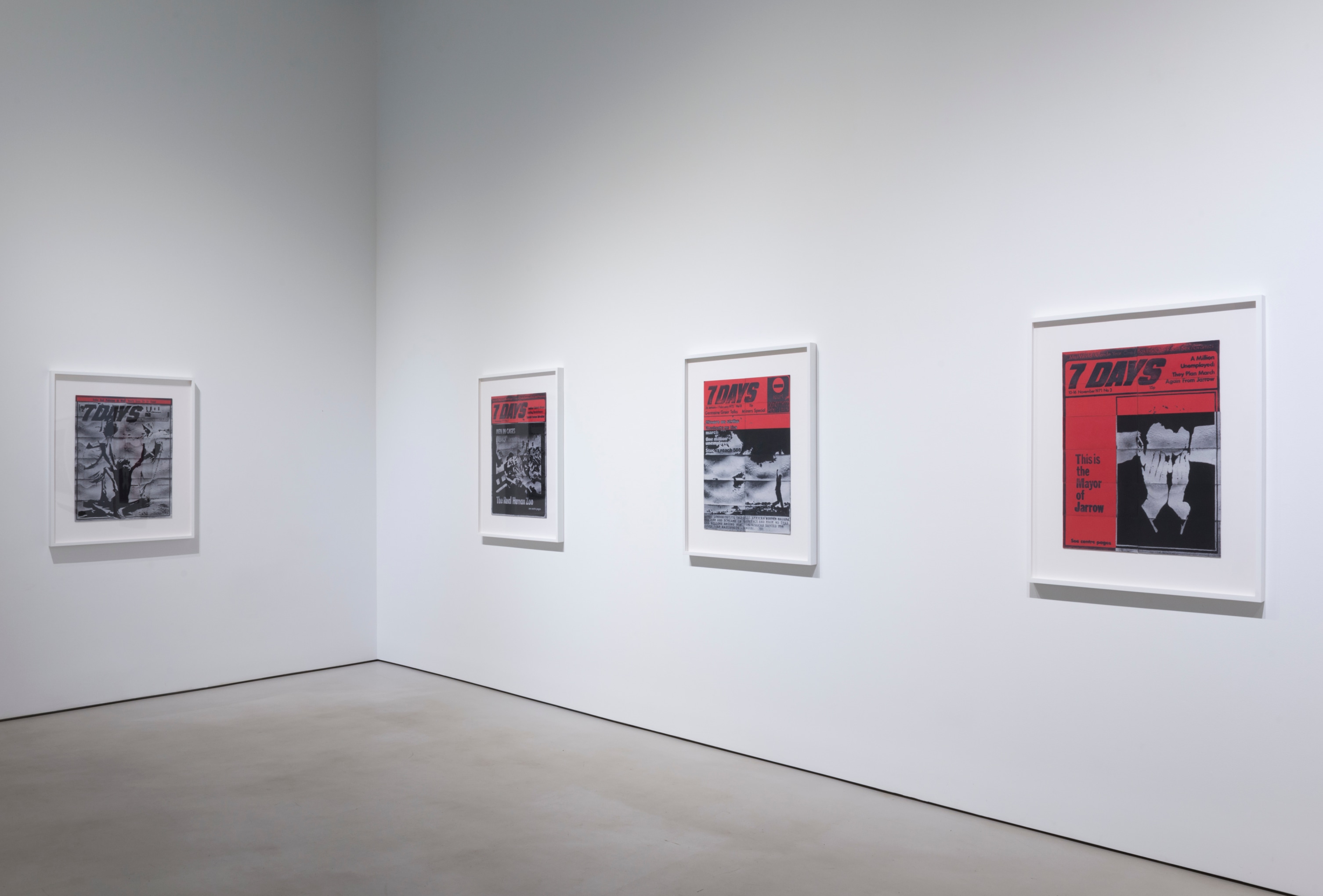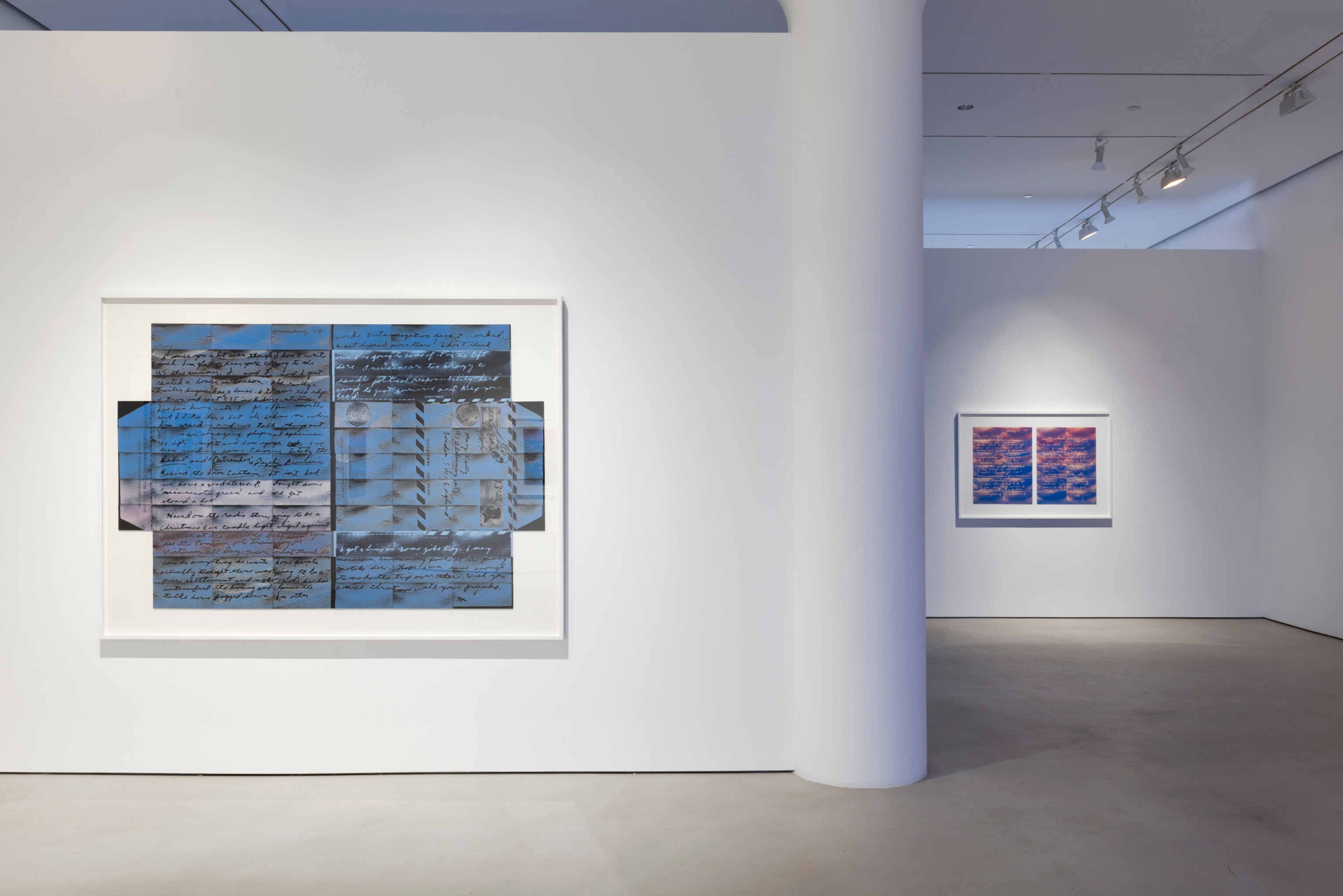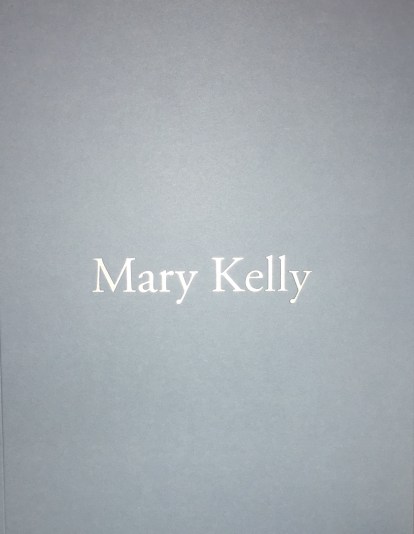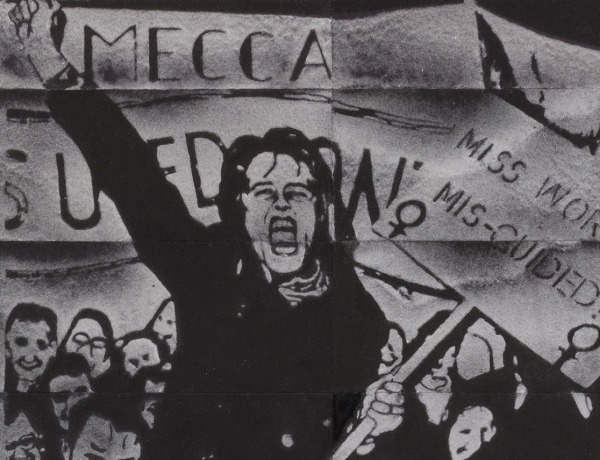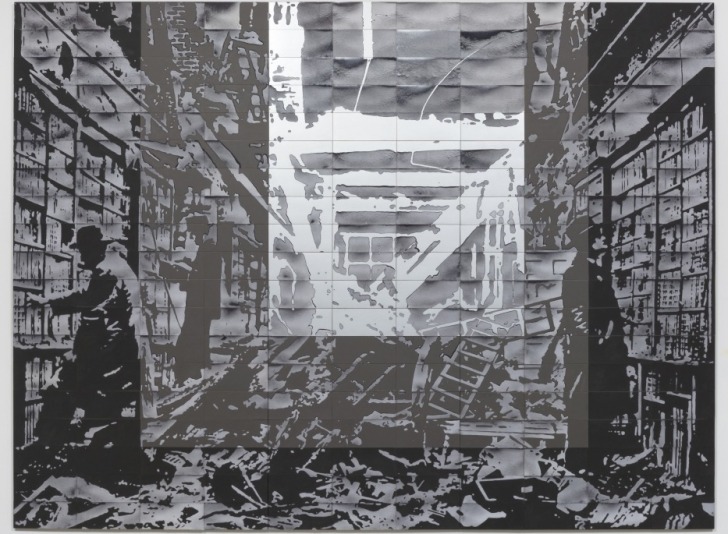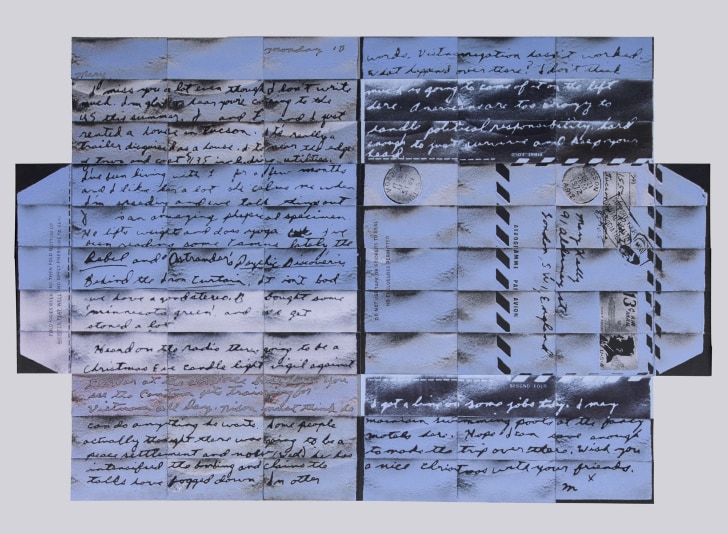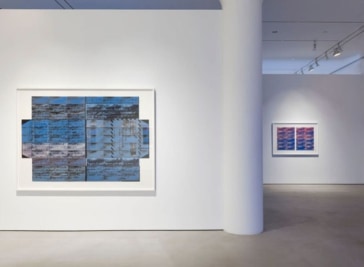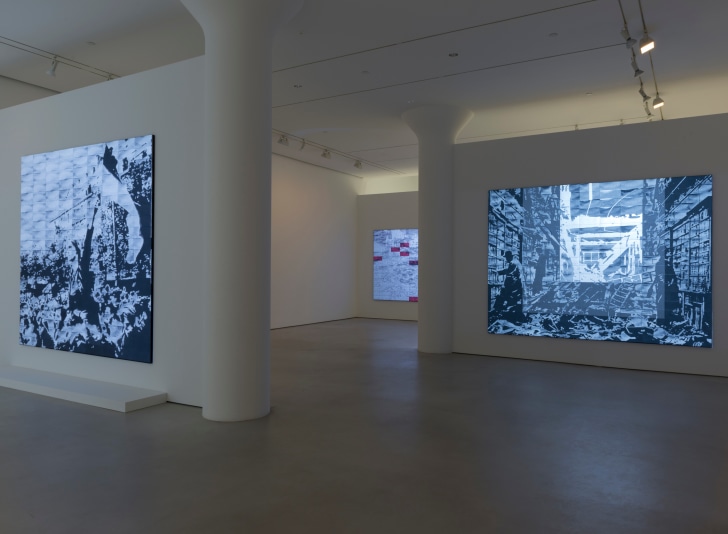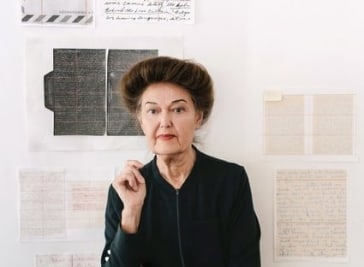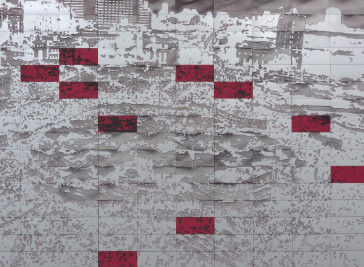
Mitchell-Innes & Nash presents conceptual artist Mary Kelly’s inaugural exhibition, The Practical Past, a project-based work that considers the meaning of an era concurrent with the artist’s lifetime and deeply influenced by the events of 1968. The installation combines “Circa Trilogy,” large-scale works that reference iconic representations of the historical past, with two series that focus on the more intimate and pragmatic politics of the everyday: “News from Home” and “7 Days.”
Concerned with affect as much as fact, Kelly’s reworking of archival images is intensely involved with both material process and duration. All of the works in the exhibition are made of compressed lint, a material Kelly has been working with for almost two decades. Individual units of compressed lint are cast in the filter screen of a domestic dryer over several months and hundreds of washing cycles, and then assembled as large panels of low relief. As the physical detritus of a cleansing process, the dryer lint becomes a material residue of collective memory in the aftermath of an event.
The three works that comprise “Circa Trilogy” have light noise projected onto the surface of the lint, making an aesthetic link to early black-and-white films or contemporary computer screens, and creating a phenomenological uncertainty about what is seen. “Circa 1940” reworks a commissioned news photo of London during the Blitz that shows three men reading books among the ruins of Holland House Library, obviously posed to capture a transcendent moment in the midst of chaos, while “Circa 1968” reflects on Jean-Pierre Rey's famous photograph of Paris on the eve of the general strike. The Marianne figure hoists a flag in the manner of “Liberty Leading the People,” but appears trapped by the role she tries to portray. “Circa 2011” draws on the prolific and often anonymous Internet images of the Arab Spring. Cell phone shots of Tahrir Square—taken just before the military takeover at the high point of mass demonstrations demanding the removal of the regime—capture the euphoria of the moment in a way that resembles a strange constellation in the night sky.
The title of the exhibition is adopted from Hayden White’s book of the same name. The term is used to describe the way we consider the past from a utilitarian viewpoint separate from factual evidence. This idea is in contrast with the ‘historical past,’ which exists as a sequence of events without interpretation. The Practical Past exemplifies Kelly’s preoccupation with the past as a repository of memory and desire as well as a means of interpreting both future and present moments. “News from Home,” unlike the emblematic images of “Circa Trilogy,” deals entirely with the practical past as a tactic for problem solving in everyday life. Personal letters from the artist’s archive, which have been recreated in compressed lint, encapsulate the lived experience of feminists in the early 1970’s. “Beirut 1970” grapples with sexual politics, noting the difficulty of putting French philosophers Sartre and De Beauvoir’s critique of monogamy into practice. “London 1974” gives a fleeting glimpse of communal living. Conflicting messages (one from a mother and another from a child) invoke the chaos and excitement of women negotiating their commitment to activism with childcare, illness, accidents, and domesticity. In “Tucson 1972,” the focus is on economic survival and alternative ways of living in the context of protests against the Nixon administration’s escalation of the war in Vietnam.
Kelly questions what defines an era and for whom it is defined. Her interest in the dissemination of political discourse through images is also addressed in the selection of works from “7 Days,” named after a publication born out of the New Left and the Women’s Liberation Movement during the 1970s. The covers of “7 Days” traverse a broad range of issues from the unionization of prisoners to unemployment, abortion rights, and the anti-apartheid struggle. As a short-lived weekly newspaper, 7 Days was in print from October 1971 to May 1972. During this time, Kelly contributed articles and illustrations to several issues. The inclusive overview of this publication is indicative of Kelly’s project overall and represents a forceful precedent for the intersectional feminism of today.


